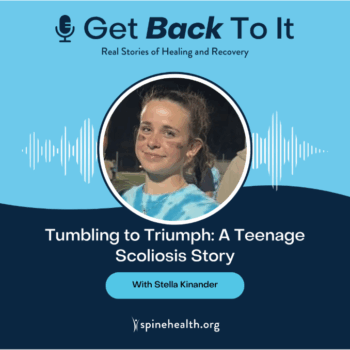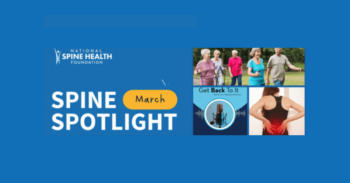June is Scoliosis Awareness Month, and in honor of raising awareness, the National Spine Health Foundation, in collaboration with the Setting Scoliosis Straight Foundation, recently hosted a highly informative panel discussion with two of the leading experts in the field of Scoliosis. This engaging session featured Dr. Suken Shah (Pediatric Spine Surgeon, Nemours Children’s Hospital) and Dr. Larry Lenke (Surgeon-in-Chief, The Och Spine Hospital), who shed light on various aspects of scoliosis, including its definition, latest treatments, and remarkable advancements for both pediatric and adult patients. If you want to gain valuable insights into this condition, we highly recommend watching this enlightening discussion!
Insights into Pediatric Scoliosis
Dr. Suken Shah, a distinguished pediatric spine surgeon from Nemours Children’s Hospital, provided valuable insights into pediatric scoliosis. He explained that the most common type of scoliosis among young people is adolescent idiopathic scoliosis. Idiopathic signifies that there is no known cause for the condition, and it typically emerges during the phase of adolescence, usually between the ages of 10 to 19. Early diagnosis usually occurs during the middle school years, aided by school screenings, parental observations, or healthcare provider assessments. Scoliosis diagnosis is then confirmed through X-rays. Treatment options depend on the severity of the spinal curvature, but for most children, surgery is not necessary. Instead, the use of a brace during the child’s growth period in adolescence is the most common approach, aiming to prevent the need for surgery later on. Surgical intervention becomes a consideration when the curvature is more severe.
Insights into Adult Scoliosis
Dr. Larry Lenke, the highly esteemed Surgeon-in-Chief at the Och Spine Hospital, shared valuable information about scoliosis progression in adults. He explained that curves that develop during childhood or teenage years can continue to slowly progress over time. While the annual increase in curvature may be only one or two degrees, over the span of three to four decades, the curvature can become substantial. Apart from the progression of adolescent idiopathic scoliosis, adults may also develop degenerative scoliosis due to arthritis and degeneration of the spine. In both cases, as the curvature grows larger, symptoms such as pain and respiratory dysfunction may arise.
Treatment Similarities and Differences
Both Dr. Shah and Dr. Lenke emphasized the significance of observation as a primary treatment approach for both pediatric and adult patients. Pediatric observation involves regular clinical assessments, height measurements, neurological examinations, and low-dose X-rays to monitor the progression of spinal curvature. In adults, observation remains the primary option, especially for those with mild to moderate curves and minimal symptoms. While the approaches are similar, adults require additional considerations such as overall health maintenance and optimizing bone density due to aging.
Remarkable Advances in Treatment
Dr. Shah discusses the advancements made in Adolescent Idiopathic Scoliosis over the past two decades. This includes the significant advancements in the classification and treatment of idiopathic scoliosis. Dr. Lenke’s classification system has become a global standard, particularly for surgical treatment, providing a consistent framework for determining the appropriate regions of the spine to be treated and the best surgical approach. Standardization in treatment is crucial to improve patient care and outcomes by minimizing variability.
Technological innovations have also played a key role in surgical advancements. These innovations have allowed for better correction of spinal alignment, preservation of that alignment, and safer surgical procedures. As a result, patients experience rapid recovery, allowing them to resume their normal activities, including sports, school, and work, with minimal disruption. Neurological safety during surgery has greatly improved, and permanent neurological problems are extremely rare in contemporary surgical practices for idiopathic scoliosis.
In comparison, Dr. Lenke highlighted the notable improvements in adult scoliosis treatment, such as transitioning from two separate surgeries to a single posterior approach. By utilizing screw fixation, modern instrumentation techniques, and osteotomies, surgeons can achieve optimal three-dimensional correction of the spine, resulting in better radiographic results and reduced complications. Furthermore, less invasive techniques have emerged, involving smaller incisions, improved deformity correction, spine stabilization, and enhanced long-term outcomes, thus representing the future of adult scoliosis treatment.
Conclusion
During Scoliosis Awareness Month, the National Spine Health Foundation and the Setting Scoliosis Straight Foundation aim to increase understanding and support for those affected by scoliosis. The Spine-Talks session with Dr. Shah and Dr. Lenke serves as an invaluable resource to learn about the condition, its latest treatments, and remarkable advancements. We encourage everyone to take the time to watch.



